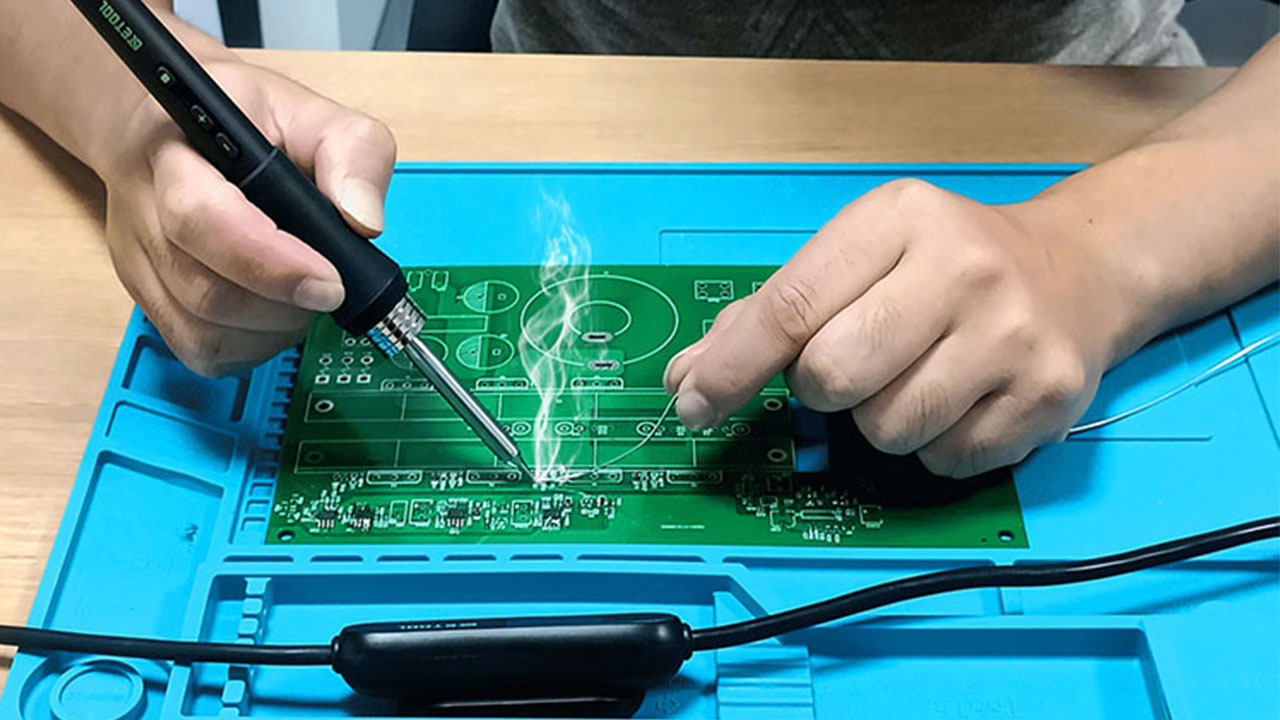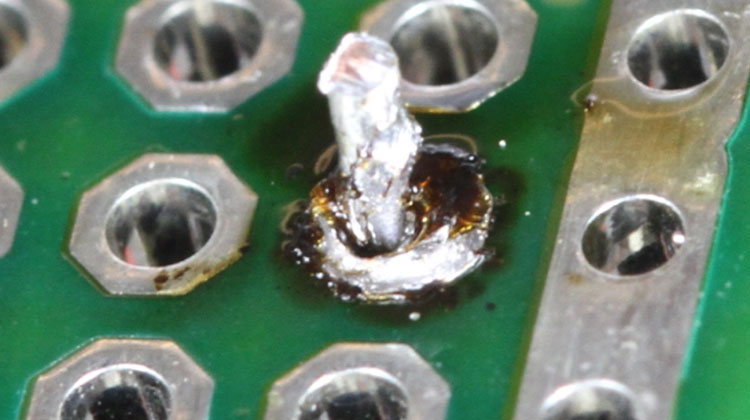Circuit boards are essential components in modern electronics, from computers and smartphones to industrial machinery and medical equipment. These boards contain complex networks of electronic components, such as transistors, diodes, capacitors, and resistors, connected by thin copper traces or wires. To assemble or repair circuit boards, soldering is a common technique that uses a heated tool to melt a metal alloy, called solder, and fuse the components and traces together.

Soldering can be an effective and reliable method for making strong and stable connections on circuit boards, but it can also cause damage if not performed properly. In this article, we will explore how a soldering iron can damage a circuit board and how to avoid these risks.
1. Heat damage
The most common way that a soldering iron can damage a circuit board is by generating excessive heat that can melt or warp the board's components or traces. Most electronic components have a maximum temperature rating beyond which they can be permanently damaged or destroyed. For example, integrated circuits (ICs), which are commonly found on circuit boards, typically have a maximum temperature range of 225-250°C, and many other components have similar limits.

If a soldering iron is too hot or held too close to a component or trace for too long, it can exceed these limits and cause irreversible damage. This can result in various problems, from partial or complete failure of the component or trace to short circuits or other unpredictable behavior.
To avoid heat damage, it is crucial to use a soldering iron with an appropriate temperature and wattage rating for the board and components being worked on. It is also important to use a fine tip to focus the heat on the specific area to be soldered rather than spreading it over a larger area. Additionally, it is recommended to use a heat sink or heat-resistant tape to protect sensitive components from heat.
2. Electrical damage
Another way that a soldering iron can damage a circuit board is by creating electrical shorts or other unwanted connections between components or traces. This can happen if the solder or flux used in the soldering process flows onto nearby areas or bridges with two or more components or traces.
Electrical damage can be difficult to diagnose and fix, as it can cause erratic behavior or complete circuit failure. In some cases, it may even lead to more severe consequences, such as damage to other parts of the system or a fire hazard.
To avoid electrical damage, it is essential to be precise and careful when applying the solder and flux. A small amount of excess solder or flux can create unwanted connections or short circuits, so it is important to clean the iron tip frequently and use a flux pen or solder wick to remove any excess material. It is also recommended to use a magnifying glass or microscope to inspect the connections and traces for any signs of bridging or unwanted connections.
3. Mechanical damage
Soldering can also cause mechanical damage to a circuit board if not performed properly. This can occur if the solder joint is not strong enough to hold the component in place or if the board is flexed or twisted during the soldering process.
Mechanical damage can lead to intermittent connections or complete failure of the circuit. It can also make the board more susceptible to other forms of damage, such as heat or vibration.
To avoid mechanical damage, it is important to ensure that the components are securely attached to the board and that the solder joints are strong and stable. This can be achieved by using an appropriate amount of solder and flux and applying pressure to the joint during the cooling process to ensure a good connection. It is also recommended to avoid flexing or twisting the board during soldering and to use clamps or other supports to hold the board in place if necessary.
4. Chemical damage
Soldering can also cause chemical damage to a circuit board if the flux used in the process is corrosive or if the solder contains impurities or contaminants. This can lead to the degradation of the copper traces or other components on the board, which can cause electrical shorts or open circuits.
Chemical damage can be difficult to prevent, as it often depends on the quality of the solder and the flux used. It is important to use high-quality, lead-free solder and flux designed for electronics applications. Using a flux pen or solder wick is also recommended to remove any excess flux after soldering, as leaving the flux on the board can cause corrosion over time.
5. ESD damage
Finally, soldering can also cause damage to a circuit board by creating electrostatic discharge (ESD) events that can damage or destroy sensitive electronic components. ESD is a sudden and brief surge of electric current that can be generated when two objects with different electrical charges come into contact or when a charged object is brought close to an uncharged object.
ESD damage can be prevented by using appropriate ESD protection measures, such as wearing an ESD wrist strap or using an ESD mat to dissipate any charges before handling the board or components. It is also recommended to avoid touching the board or components with bare hands or metal tools, as this can create ESD events.
In conclusion, soldering is a powerful tool for assembling and repairing circuit boards, but it can also cause damage if not performed properly. The most common types of damage caused by a soldering iron are heat, electrical, mechanical, chemical, and ESD. To avoid these risks, it is essential to use appropriate soldering techniques, tools, and materials, as well as take precautions to protect the board and components from damage. With careful attention and practice, it is possible to achieve reliable and high-quality soldering connections that will ensure the long-term performance and reliability of the circuit board.
Contact: Mr. Li
Phone: (0086) 138 24254 321
E-mail: atetool@atetool.com.cn
Add: 5F, 1-2# Building, Tongfuyu Industrial Zone, Aiqun Rd, Shiyan Subdistrict, Bao'an, Shenzhen, 518108, China